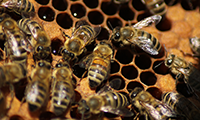Special Foresight Publications
 |
Global Pollinator Decline: A Literature Review - A scientific Report about the Current Situation, Recent Findings and Potential Solution to Shed Light on the Global Pollinator CrisisBiodiversity loss refers to species' extinctions due to habitat destruction, land conversion for agriculture and development, climate change, pollution, the spread of invasive species and other reasons. Biodiversity losses are not only affecting natural ecosystems but also the services they provide. These services are vital for human societies, such as the provision of oxygen into the atmosphere, renewing of soils and pollination. This Alert is a scientific report about the current situation of pollination, recent findings, and potential solution to shed light on the global pollinator crisis. There is a need for well-documented cases of specific pollinator declines notwithstanding, rapid extrapolation from our current knowledge to imply worldwide pollinator and crop production crises might be inappropriate and premature, much uncertainty remains regarding pollinator-pollination declines. As Albert Einstein put it bluntly, “No bees, no food for mankind. The bee is the basis for life on this earth.” |
 |
UNEP Emerging Issues: Environmental Consequences of Ocean Acidification: A Threat to Food SecurityIncreased carbon dioxide (CO2) from the burning of fossil fuels and other human activities continues to affect our atmosphere, resulting in global warming and climate change. Less well known is that this carbon dioxide is altering the chemistry of the surface oceans and causing them to become more acidic. This Alert discusses the process called ocean acidification and its environmental impacts. Ocean acidification could have significant consequences on marine organisms which may alter species composition, disrupt marine food webs and ecosystems and potentially damage fishing, tourism and other human activities connected to the seas. The obvious solution to the potential threats posed by ocean acidification is to make rapid and substantial cuts to anthropogenic CO2 emissions to the atmosphere and hence, oceanic CO2 concentrations. However, the likelihood is that this will not occur in the immediate future. |
 |
UNEP emerging issues: global honey bee colony disorder and other threats to insect pollinatorsHas a “pollinator crisis” really been occurring during recent decades, or are these concerns just another sign of global biodiversity decline? Several studies have highlighted different factors leading to the pollinators’ decline that have been observed around the world. This Alert considers the latest scientific findings and analyses possible answers to this question. As the bee group is the most important pollinator worldwide, this Alert focuses on the instability of wild and managed bee populations, the driving forces, potential mitigating measures and recommendations. This Alert concludes that currently available global data and knowledge on the decline of pollinators are not sufficiently conclusive to demonstrate that there is a worldwide pollinator and related crop production crisis. Available agricultural production data, appears to indicate that global agriculture has become increasingly pollinator dependent over the last 50 years. |
 |
Policy implications of warming permafrostPermafrost is any ground that remains completely frozen for at least two years straight. These permanently frozen grounds are most common in regions with high mountains and in Earth’s higher latitudes—near the North and South Poles. Permafrost covers large regions of the Earth. Almost a quarter of the land area in the Northern Hemisphere has permafrost underneath. Although the ground is frozen, permafrost regions are not always covered in snow. The distribution of permafrost is controlled by air temperature and, to a lesser extent, by snow depth, vegetation, orientation to the sun and soil properties. This Alert reviews the policy implications of warming permafrost. The Alert also discusses specific policy recommendations to address the potential economic, social and environmental impacts of permafrost degradation in a warming climate. |
 |
21 Issues for the 21st century: results of the UNEP foresight process on emerging environmental issuesThe purpose of the UNEP Foresight Process is to regularly produce, a careful and authoritative ranking of the most important emerging issues related to the global environment. The concept of ‘emerging issues’ is subjective. It is used in this Alert to describe issues that are recognized as very important by the scientific community but are not yet receiving adequate attention from the policy community. This Alert explains the 21 emerging environmental issues identified through the UNEP 2011 Foresight Process. The Alert also determined the top 10 issues among the list of 21, middle 5 issues, and bottom 6 issues. |
 |
The Future of Electric Vehicles and Material ResourcesLimiting global warming to 1.5°C will require a rapid reduction of emissions from the transport sector, which is responsible for almost a quarter of direct greenhouse gas emissions. The main goals of this foresight brief are to highlight major opportunities and challenges in the mainstreaming of Electric Vehicles EVs; examine the sustainability case of EVs by focusing on material resources, and offer policy recommendations for ensuring the long-term resource sustainability of EVs. Based on recent trends, this brief identifies opportunities and challenges involved with the adoption of EVs. It also addresses concerns regarding material resources used in EVs and their batteries with a focus on their end-of-life management. |
Contact: unep.foresight@un.org
